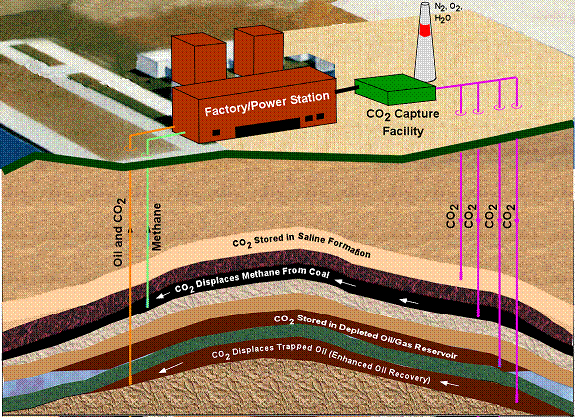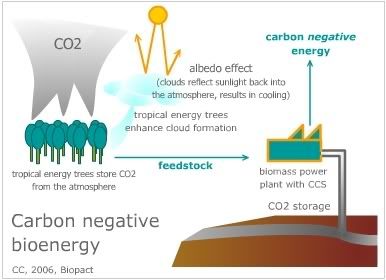Rapeseed oil used as fuel causes extremely high cancer risk
 Some less pleasant news is coming from the Berufsgenossen- schaftliches Forschungsinstitut für Arbeitsmedizin (BGFA) at the Ruhr-University of Bochum, Germany. Scientists at this institute of research for health protection at the workplace have found [*German] that the exhausts of rapeseed oil used as a fuel in internal combustion engines increases cancer risks 10-fold compared to the exhausts from regular diesel or biodiesel.
Some less pleasant news is coming from the Berufsgenossen- schaftliches Forschungsinstitut für Arbeitsmedizin (BGFA) at the Ruhr-University of Bochum, Germany. Scientists at this institute of research for health protection at the workplace have found [*German] that the exhausts of rapeseed oil used as a fuel in internal combustion engines increases cancer risks 10-fold compared to the exhausts from regular diesel or biodiesel.Rapeseed oil, or canola oil as it is known in leading producer Canada, is a widely used feedstock for the production of biodiesel. But the oil can be used in diesel engines in its pure, cold-pressed form too. More and more large transport firms are switching to using exactly this pure plant oil (PPO), because it is considerably cheaper than biodiesel. Especially in Germany, PPO is used extensively, mainly because a thriving industry developed over the years which converts diesel engines in a very efficient and affordable way to make them run on rapeseed oil.
In a first series of analyses, Dr Jürgen Bünger's research team compared the emissions from burning petroleum diesel, biodiesel and rapeseed PPO in a diesel engine, and their damaging effects on genetic material. These effects are an indirect indicator of the cancer-inducing potential of the toxic fumes. They noted that for both petro-diesel and biodiesel, the cancer-inducing potential was relatively low, whereas that of pure rapeseed oil was 10 times higher. At first, the scientists believed that the high viscosity of the plant oil was to blame for this dramatic result:
 biomass :: bioenergy :: biofuels :: energy :: sustainability :: rapeseed :: canola :: pure plant oil :: cancer :: biodiesel :: diesel :: Germany ::
biomass :: bioenergy :: biofuels :: energy :: sustainability :: rapeseed :: canola :: pure plant oil :: cancer :: biodiesel :: diesel :: Germany :: To find out, they carried out similar tests on a type of rapeseed oil that was treated in such a way that its viscosity was lower. The results were surprising: the cancer potential of this type of oil was 30 times higher than that of diesel and biodiesel. "A completely unexpected result", says Dr Jürgen Bünger, "which proves that the viscosity of the oil can not be the determining factor". The scientists are now trying to find the precise causes of the large difference between rapeseed oil and its alternatives in a new project. Because the research is complex but important for public health, engineers, medical scientists and chemists from the BGFA, the University of Göttingen, the Bundesforschungsanstalt für Landwirtschaft (the German agency for agricultural research) and Coburg College have teamed up.
One thing is certain: the use of pure rapeseed oil as a transport fuel is a health hazard to all employees who drive such vehicles on a daily basis and who are exposed to the exhausts. Workplaces where diesel engines fueled by PPO are operated, and that are not well aerated, should be considered to be dangerous as well. In such places, workers are directly exposed to the cancerogenous fumes.
The researchers show that products carrying the 'bio'-label must be carefully screened on their health risks.
We might add that several other types of plant oil are being used in their pure form as a transport fuel and for electricity generation in diesel gensets, most notably jatropha oil. As far as we know, there has been no research into the potential cancer risks associated with the use of this fuel. Jatropha oil is mainly utilised in the developing world, albeit on a small scale.
Article continues
 -------------------
-------------------
 Spanish company Ferry Group is to invest €42/US$55.2 million in a project for the production of biomass fuel pellets in Bulgaria.
The 3-year project consists of establishing plantations of paulownia trees near the city of Tran. Paulownia is a fast-growing tree used for the commercial production of fuel pellets.
Spanish company Ferry Group is to invest €42/US$55.2 million in a project for the production of biomass fuel pellets in Bulgaria.
The 3-year project consists of establishing plantations of paulownia trees near the city of Tran. Paulownia is a fast-growing tree used for the commercial production of fuel pellets.

 Soon, men and mice won’t be the only beneficiaries of the diagnostic wonders of computerized tomography (CT). US Department of Energy officials
Soon, men and mice won’t be the only beneficiaries of the diagnostic wonders of computerized tomography (CT). US Department of Energy officials 

 Jeb Bush, governor of the State of Florida and a staunch advocate of lifting the US tariff on imported ethanol, Roberto Rodrigues, president of Brazil's Superior Council of Agribusiness of FIESP and former Minister of Agriculture, and Luis Alberto Moreno, president of the Inter-American Development Bank (IDB),
Jeb Bush, governor of the State of Florida and a staunch advocate of lifting the US tariff on imported ethanol, Roberto Rodrigues, president of Brazil's Superior Council of Agribusiness of FIESP and former Minister of Agriculture, and Luis Alberto Moreno, president of the Inter-American Development Bank (IDB),  In its latest
In its latest 







Monday, December 18, 2006
The bioeconomy at work: oil crisis boosts African sisal industry
The bioeconomy offers a sane and environmentally friendly alternative. A large number of products from the petrochemical industry - from plastics and fuels to fertilisers and pesticides - have already found plant and bio-based alternatives (see our quick look at plant-based car parts and our overview of bioplastics and biopolymers). Considerable R&D efforts are underway to stimulate this bright green future, with some of the world's most brilliant scientists working in it.
But it doesn't always take top research to enter the bioeconomy. Sisal farmers in Tanzania are experiencing boom times simply because their product is now being preferred over the oil-based alternative on price grounds.
Industrial fibres
Sisal is a tropical crop that has been cultivated for centuries for its strong, durable fibres. From the 19th century onwards, the plant has spread out over the planet and today it is the second most important fibre crop, after cotton. Sisal yields industrial fibres used in the manufacture of ropes, yarns, geotextiles, luxury articles (such as designer furniture and carpets) and even in car parts. More and more it is being used to replace (cancerogenic) asbestos and fibreglass. Besides the fact that it is biodegradable, sisal's special properties make it attractive for many new applications and products (such as fire-resistant building materials).
In East Africa, the largest production zone, sisal is an estate crop, employing a considerable number of people (in Tanzania alone the industry generates 90,000 jobs). And farmers and plantation owners are now experiencing a boost, because more and more manufacturers are choosing sisal over petroleum-based synthetic fibres, such as nylon:
J.J. Ngelime, a sisal consultant to Tanzania's Parastatal Sector Reform Commission (PSRC) is quoted by the Dar-Es-Salaam based Tanzania Daily as saying that "In recent months, demand for sisal products by foreign manufacturers has increased. For example, sisal has special use in the manufacturing of Mercedes Benz cars. More than 20kg of sisal products are needed in the manufacture of Mercedes Benz Class C car. In the USA, the manufacturers of lifting cables are now obliged by law to use sisal cores."
He added that "This is a great opportunity for sisal exporters from Tanzania, because sisal fibres from Tanzania have a competitive advantage over those from Mexico, Brazil or China".
The consultant did not give comparative prices because, he said, the situation on the world market was currently in favour of sisal exports from countries like Tanzania. Ngelime continues: "Nylon is a by-product of crude oil. The oil price is steadily increasing and moreover nylon is unfriendly to the environment because it does not decompose easily. The two reasons have led to increased demand for sisal products on the world market".
Tanzania's Minister for Agriculture, Food Security and Cooperatives, Mr Stephen Wassira, said over the weekend that new strategies to increase sisal output in the country are being studied. The government has reviewed its sisal policy in a bid to address issues that are impacting badly against the industry.
Originally there were about 82 sisal estates in Tanzania that were owned by the government, but many of those are being privatized. The leading investor in the country is Mohammed Enterprises Tanzania Limited (METL). The Managing Director of METL, Mr Mohammed Dewji, said his company is aware of the new opportunity available in the industry and is resolved to tap it.
As a result of his investments, Mr Dewji said, METL has become Tanzania's single largest sisal producer, contributing almost twenty per cent to the country's total sisal output. He said METL aims to increase output to 15,000 tonnes at full capacity.
Bioenergy
Many tropical crops have different (traditional) purposes and often one single crop can be used for the prodution of both food, fodder, fuel and fibre - the four "F"'s. This makes them particularly interesting as feedstocks for the bioeconomy in its most primitive state. Sisal is no different.
Mr Dewji has understood this and says that his company "is also looking for opportunities to diversify the sisal business in the areas of sisal biogas and sisal pulp for the paper industry".
After all, the harvest and processing of sisal leaves, which contain the fibres, leaves a large amount of unused biomass residue behind. Roughly 5 percent of all harvested and processed biomass is currently converted into useful products. The other 95% make for a potential biofuel feedstock. With high energy prices, the idea of using sisal waste for bioenergy becomes attractive.
In the 1960s, Tanzania was the leading sisal producer in the world with an annual output of 230,000 tonnes. But in the 1970s production started to decline because of a fall in prices, cause by the massive introduction of synthetic, oil-based fibres. Current output in the country stands at 20,000 tonnes with annual revenues of US$17 million. The current target of the Tanzanian government is to increase the output to 50,000 tons by 2015.
Article continues
posted by Biopact team at 9:59 PM 0 comments links to this post